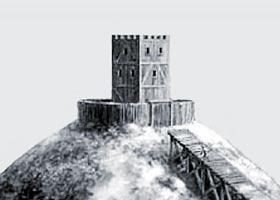 |
Motte and Bailey Castles - Attack & Defence |
| The Norman Strategy of Control, Attack & Defence | |||
| The History of England's Attack & Defence strategy When the Normans invaded there were very few English Castles - the English had built fortified towns called Burhs but these acted as a safe retreat for the indigenous population - not a base for control, attack and defence. Hillforts had also been constructed and going even further back in time the Romans had built Roman Forts. The speedy construction of so many Motte and Bailey castles enabled the Normans to totally subjugate the English - the perfect vehicles for control, attack and defence. |
Motte and Bailey Castles - Attack & Defence Motte and Bailey Castles Attack & Defence
The choice of location of the Motte and Bailey Castle - critical for Control, Attack & Defence
It can be seen that the choice of one of the above locations for a Motte and Bailey castle was critical for the Norman strategy of control, attack and defence! Motte and Bailey Castles - Attack & Defence
Motte and Bailey Castles - The Problems of the Attack !
|
Motte and Bailey Castles - Attack Strategy using Fire! Motte and Bailey Castles - Attack - Siege Strategy!
It now becomes very clear why the Norman strategy of building Motte and Bailey castles was so successful - and why the Norman Invasion force of between 5000 and 10,000 maintained their dominance over the whole of the Anglo-Saxon population after winning the Battle of Hastings! The Norman Motte and Bailey Castles - Attack & Defence |
| © March 2018 SiteSeen Ltd. | Cookies Policy | Privacy Statement | By Linda Alchin | ||
